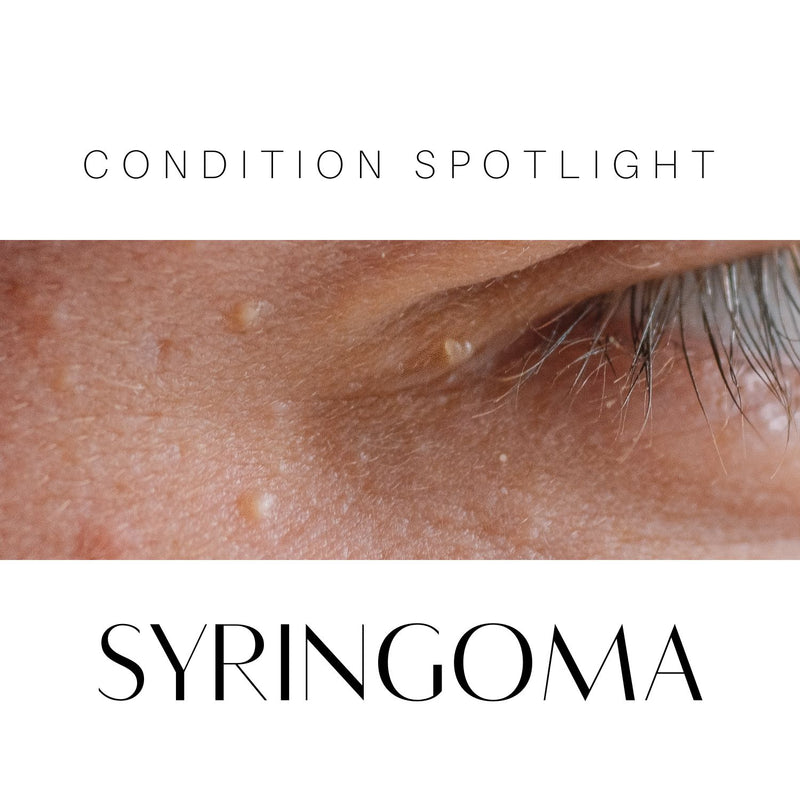Understanding Syringomas

Skin conditions can vary widely in their presentation and impact on our daily lives. One such condition is syringomas, which, although harmless, can be aesthetically concerning to some individuals. In this blog post, we will explore the causes, treatment options, and prevalence of syringomas, shedding light on this common yet lesser-known dermatological concern.
Understanding Syringomas:
Syringomas are benign, non-cancerous skin growths that typically appear as small, firm bumps or nodules. They are caused by the proliferation of cells in the sweat gland ducts, specifically the eccrine sweat glands. Syringomas are usually flesh-colored or slightly yellowish and are commonly found in clusters. While they can occur anywhere on the body, they most commonly appear on the lower eyelids, upper cheeks, and neck.
Causes of Syringomas:
The exact cause of syringomas is not yet fully understood. However, certain factors have been associated with their development:Genetic Predisposition: Syringomas often have a familial or hereditary component. They are commonly observed in families, suggesting a genetic influence.
Hormonal Factors: Hormonal changes, such as those occurring during puberty or pregnancy, have been linked to the development of syringomas. These changes may affect the sweat gland ducts and contribute to the formation of these benign growths.
Skin Trauma: Some researchers believe that previous skin trauma, such as acne or injuries, could trigger the development of syringomas. However, more studies are needed to establish a conclusive link.
Treatment Options for Syringomas:
Although syringomas are benign and do not pose any health risks, many people seek treatment due to cosmetic concerns. Several treatment options are available, depending on the location, size, and desired outcome:
Topical Medications: Certain creams or ointments containing ingredients like retinoids or alpha-hydroxy acids may help reduce the appearance of syringomas. However, the effectiveness of topical treatments can vary, and results may take several months to become noticeable.
Cryotherapy: This treatment involves freezing the syringomas with liquid nitrogen, causing them to gradually disappear. Cryotherapy is a relatively quick and simple procedure that can be performed by a dermatologist.
Electrocautery: In this procedure, a dermatologist uses an electric current to destroy the syringomas. Electrocautery is effective for smaller syringomas and can be performed under local anesthesia.
Laser Therapy: Various laser techniques, such as CO2 laser or erbium:YAG laser, can be employed to treat syringomas. Laser therapy is particularly useful for delicate areas like the eyelids, offering precise targeting and minimal scarring.